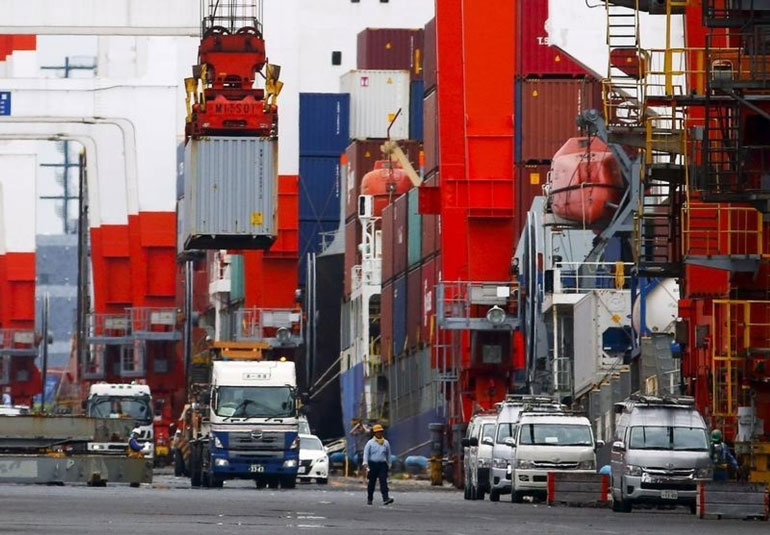Thursday Nov 20, 2025
Thursday Nov 20, 2025
Thursday, 22 October 2015 00:00 - - {{hitsCtrl.values.hits}}

TOKYO (Reuters): Japan’s annual export growth slowed to a crawl in September as shrinking sales to China hurt the volume of shipments, raising fears that weak overseas demand may have pushed the economy into recession.
Ministry of Finance data showed exports rose just 0.6% in the year to September, against a 3.4% gain expected by economists in a Reuters poll.
That was the slowest growth since August last year, following the prior month’s 3.1% gain. The weak yen helped increase the value of exports, but volume fell 3.9%, the third straight month recording an annual decline.
Wednesday’s data was the first major indicator for September and is part of the calculation of third quarter gross domestic product. A third quarter contraction would put Japan into recession, following the second quarter’s negative GDP result, and could force policy makers to offer further stimulus.
“Given this data, the economy probably contracted about an annualised 0.5% in July-September. External demand, capital spending and inventory investment were a likely drag, while consumption picked up,” said Koya Miyamae, senior economist at SMBC Nikko Securities.
China’s slowdown and soft domestic demand weighed on factory output and the broader economy, although the Bank of Japan saw the effects of China’s slowdown as limited for now, sticking to its rosy growth outlook.
Still, weak indicators will keep the central bank under pressure to ease policy again to hit its ambitious 2% inflation target next year.
Some analysts expect the BOJ to move at its Oct. 30 monetary meeting, when it also issues long-term economic and price projections.
“Weak exports were within the BOJ’s expectations so this data alone could not be a trigger. But there’s no doubt that pressure will mount on the BOJ to act if weakness persists,” said Taro Saito, senior economist at NLI Research Institute.
Separate data by the BOJ, which captures trade movements in real terms by eliminating price effects, showed real exports rose 0.2% in July-September while real imports grew 2.6%. This suggests net exports weighed on third-quarter GDP, said Yuichiro Nagai, economist at Barclays Securities Japan.
China syndrome hits trade powerhouses
China’s economic growth has dipped below 7% for the first time since the global financial crisis, despite a barrage of stimulus measures.
Flow-on effects of the slowdown are spreading though Asia, with South Korean exports tumbling while Taiwan’s export orders continued to slide recently, sapping Asia’s trade powerhouses.
The MOF data showed China-bound exports fell 3.5% year-on-year in September, down for a second straight month on falling shipments of light oil and car parts.
Shipments to Asia – which account for about a half of Japan’s overall exports – fell 0.9% in September, the first annual decline in seven months.
Exports to the United States, a major buyer of Japanese products, rose 10.4% in September, led by shipments of cars. In volume terms, however, US-bound exports fell 4.7%.